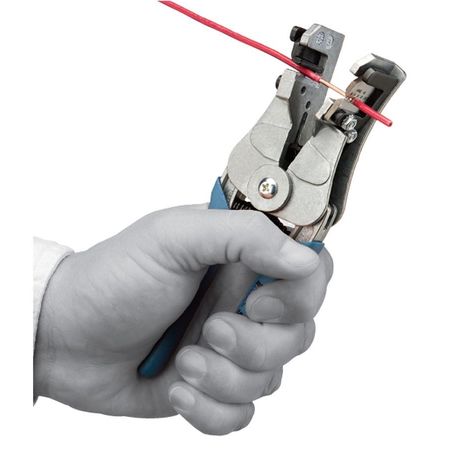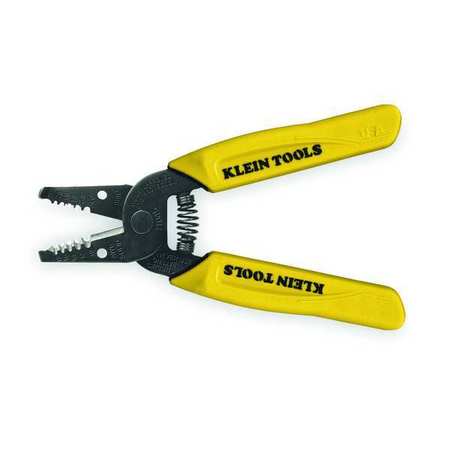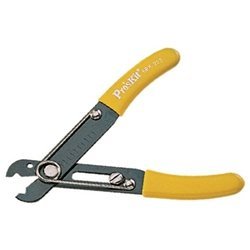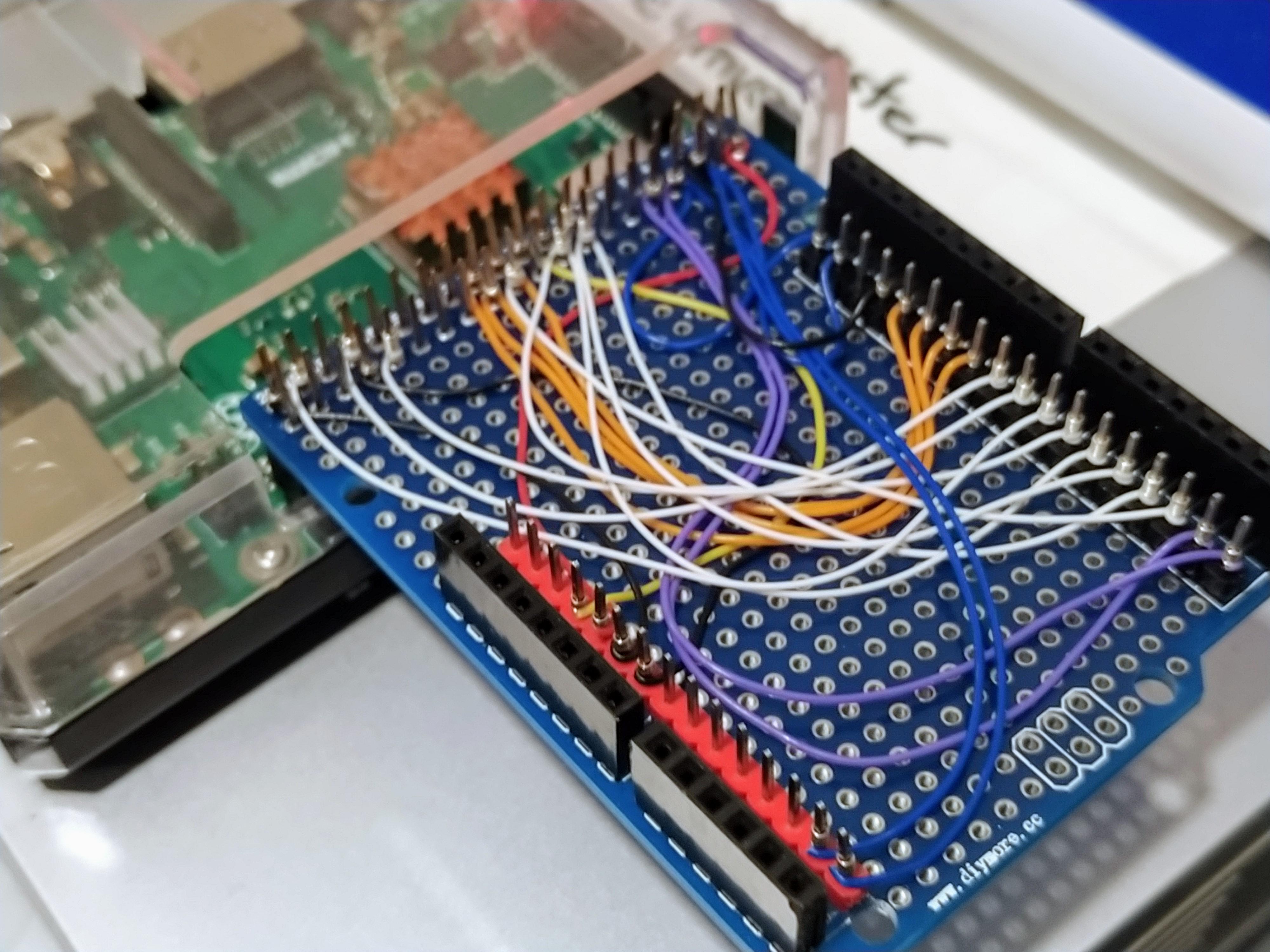-
• #2
Interesting - I'd never heard of these. If anyone's interested in what they look like in action:
https://www.youtube.com/watch?v=y-cQQ8-LybI
I always just use these: http://cpc.farnell.com/ideal/45-121/t-stripper-16-26-awg-stranded/dp/TL00592
They're a million times better than the 'automatic' ones, and seem to work great for most wire I use.
But then I imagine wire with tougher insulation (or insulation that can stretch) would be great with something like the thermal stripper...
We really ought to have a thread or something for useful tools. There are loads of really helpful tools out there that don't get publicised much.
-
• #3
Wed 2018.08.15
The link to this post turned up in a Google search result set for tools, and was surprised to find myself back here in the Espruino forum.
I debated about even posting as my response would date me a bit and the original post is aging. What pushed me over the edge was the following two exclamations:
re: Has anyone else experienced the magic of these? Why are these such a
well kept secret?re: Interesting - I'd never heard of these
Maybe this PTS-10 tool use is regional perhaps, as I'm surprised to see that others haven't seen this type of tool. My first exposure was over thirty years ago, back in the eighties working for a small electronics manufacturing facility in Butler, a suburb outside Milwaukee Wisconsin USA. Near Harley Davidson mfg for we bikers out there. . . . I digress.
A colleague of mine made the purchase in an attempt to find a suitable tool to strip 30AWG Kynar wire-wrapping wire. Does anybody still wire wrap circuit boards anymore? The thermal strip tool was produced for and marketed by Amp back then, but hasn't changed a bit. We used a C-Clamp to fix to the end of our bench to make a more stable work surface and could easily strip 30 wires a minute using the adjustable stop. We had contests to see who could prep wire harness bundles the quickest to pass on to the crimpers. Boy does that bring back memories!!
USA - Maryland
The tool was good for PVC type insulation but was lousy for Teflon or the inner insulator of Coax cables. Never did get it to work reliably for the Kynar wire as it was just too small a diameter and not suitable for the angled thermal blade innermost edge.
My preference for stripping tools is this one, StripMasterhttps://www.zoro.com/ideal-wire-stripper-22-to-10-awg-7-in-45-092/i/G2785745/
The one I own, also thirty plus years old, has an adjustable stop and years ago had a small plastic enclosure that captured the trimmed ends, although that got in the way more than it helped. Just slide the wire in, up to the stop and squeeze. The wire is trapped in the spring loaded jaw that allows for the expanding mated jaw to slide off the stripped end, all in one squeeze. No nicked strands as can occur during rapid use of the Ideal/Klein type:
https://www.zoro.com/klein-tools-wire-stripper-18-to-10-awg-6-14-in-11045/i/G2891043/
Brought back a load of memories from my 'youth and treachery' days. Now it's 'age and wisdom' I rely on.Thanks for the trip down memory lane!
-
• #4
I was raised to have an extreme disdain for that kind of stripper (The one robin and gordon showed a picture of). My father spoke ill of them every time they came up, and presented them as a "well, this might be easier while you're new to stripping wires" type thing - I was raised on these things... of course as I said when I started this thread an eon ago, I have now seen the light. Thermal wire stripping is just such a joy compared to the old way (it was often more than a third of the time a project took to wire up!)
1 Attachment
-
• #5
Sat 2019.11.16
Hey @DrAzzy a bit puzzled from the image shown and the tone of the response.
'raised to have an extreme disdain for that kind of stripper (The one robin and gordon showed a picture of)'
Which is 'that kind' ? The images I posted were of mechanical strippers, Gordon's a thermal type.
'I have now seen the light. Thermal wire stripping is just such a joy compared to the old way'
The statement indicates that using a thermal stripper is preferable, yet the image shown in #4 is that of an adjustable stripper.
Was the image to show the type of tool that you grew up with?
re: 'I was raised on these things'
Although I have used the Klein type as well as the adjustable, I've always found the offset opposing blades would nick the wire, whereas the hand clamp type has a matching same side cutter blade arrangement. Maybe I just lucked out with a pristeen set of blades, which incidentally, are adjustable.For the thermal stripper, as I pointed out in #3, we were using those thirty five years ago in a manufacturing environment USA and definitely sped up the stripping process.
-
• #6
Wow, thread resurrection!
It's interesting everyone has such strong opinions. @DrAzzy with the yellow one you showed, was it adjustable with that slot/screw thing?
I have painful memories of using the StripMaster type @Robin mentioned above in schools and tearing half the strands of wire out each time. I guess it depends on the wire you use them with - I bet they'd be awesome for solid core.
Given the relatively small amount of wire I strip (often of different sizes) I'm a massive fan of the Ideal/Klein type - but I bet if you end up stripping a lot of the exact same type of wire you end up hating them with a vengeance!
-
• #8
for most wire(insulation)s
I the temperature adjusted? Some insulations need more than others to yield.. ;-; ... and some just don't want to cave, even not with mechanical cutting ones,... like the 'o..ld' wire wrapper wires' one.
-
• #9
some just don't want to cave
like the 'o..ld' wire wrapper wires' one.Do you remember the 'V' slot blades for stripping 30AWG Kynar for wire wrap? Searching for a link . . .
EDIT:

This is how we built prototypes in the 80's - Much faster than soldering as no wire prep is necessary and the wire is spun on with an PTX-1BF electric tool like in the stripper link - better mechanical and electrical connectivity as the wire cuts into the square post.

EDIT:
PTX-1BF

-
• #10
Nope, it's not a fancy adjustable temperature one. It works with common wire, does not work on teflon insulation, for example.
That bit is annoying, because said insulation is also a flaming bitch to remove with cutters too (thin little strands stay connected, and have a lot of strength to them), and I have a huge reel of 6-conductor twisted teflon insulated wire, absolutely beautiful wire except that it's so annoying to strip.
-
• #11
I have recently rediscovered the magic of wire wrap because of how cheap the tools and wires are nowadays. Most of my prototyping now involve wire wrap in some form or the other.
(I'm somehow not able to upload images, so I'm putting a gphotos link instead of a small rpi to arduino uno shield adapter for quickly reusing shields with the pi)
https://photos.app.goo.gl/bzHsnE9Sq9sqpw4P6
1 Attachment
-
• #12
Sun 2019.12.08
Nicely done @parasquid neat and consistent wraps.
'I have recently rediscovered the magic of wire wrap'
Yes, me too. Toyed with which choice on a recent proto, but opted to solder as the 1" x 1" board size was just too small.
'I'm somehow not able to upload images'
The process used is how the forum requires it.
FYI for others reading along, there is an explanation in the 'Formatting help' link between the 'Cancel' and 'Post reply' button beneath the edit window.
 Gordon
Gordon Robin
Robin

 DrAzzy
DrAzzy
 allObjects
allObjects parasquid
parasquid
Until recently, I wasn't aware of "thermal wire strippers". These are devices which heat up an element that is then used to melt through the insulation of the wire, allowing you to easily strip it.
I had never realized how miraculously effective they are, nor had my father who built stuff since high school (he was etching PCBs at home in the 50s) and was an electrical engineer for his whole career. Holy shit. They are amazing. Before this, the most time consuming part of wiring up a project was often not the soldering, but just stripping the ends of the short little pieces of wire (shorter wire being harder to strip, because there's less wire to grab and pull).
The thermal stripper does it EFFORTLESSLY. You put it in, twist, gently pull, and off the insulation comes. The one I have doesn't get hot enough to burn you (well, I think the temperature is hot enough, but not enough thermal mass nor power output in the hot part) - the hot element is a little inch-long strip of metal with a slot in the middle, narrower at one end, so you put it in the wide end, slide to narrow end and twist 180 degrees.
It is magic, and I cannot recommend it more highly. The one I have is a PTS-10 from PATCO. I can leave it plugged in over night and it's fine the next day, no prob (just like my old vomit-green colored weller soldering irons) They're like $80 new, and worth every penny. I am in no way affiliated with nor compensated by PATCO - I just want to share this, because, well - because nobody ever told me about these, and I'd been stripping wires the hard way my whole life (well - almost my whole life, I wasn't doing anything with electronics until first or second grade IIRC). If I could go back in time and hand myself one 20 years ago, I totally would.
Has anyone else experienced the magic of these? Why are these such a well kept secret?